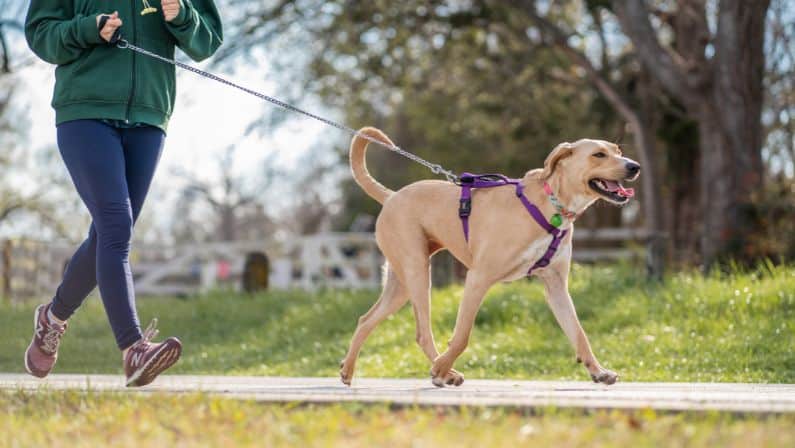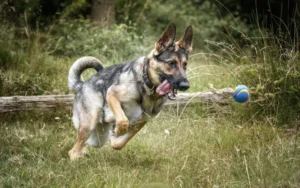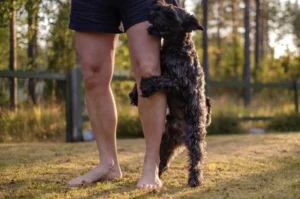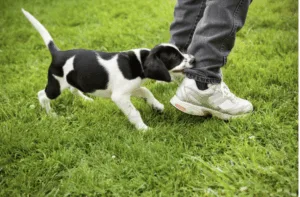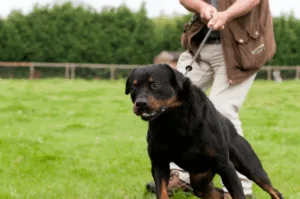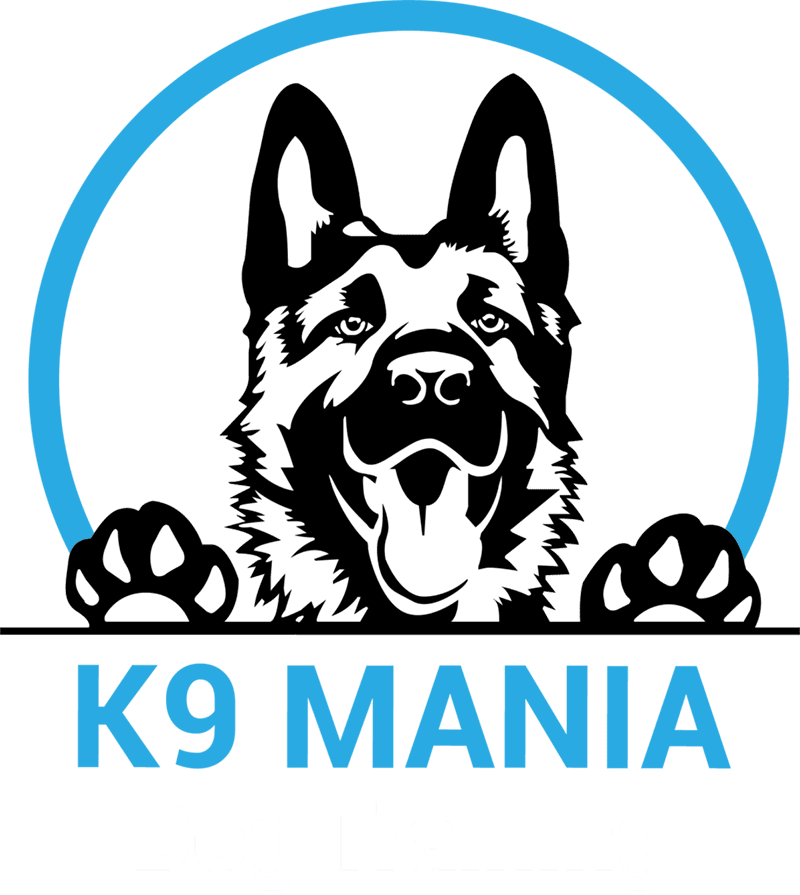Do you ever wonder why your dog is sweet at home but starts to misbehave when you step outside? Do you want to take your dog out for a nice walk outside only to spend half the time chasing after them? You’re not alone.
If you struggle with peacefully walking your dog outside, it may be time to train for leash reactivity.
What is dog leash reactivity?
Leash reactivity is when dogs overreact to a stimulus while wearing a leash, such as lunging, barking, growling, or pulling on their leash at the sight of other dogs, people, or cars.
Whether it’s out of excitement, curiosity, or fear, having a reactive dog can make it challenging to take them outside. By learning how to train a reactive dog on leash, you can make your walks more fun and safe for everyone involved!
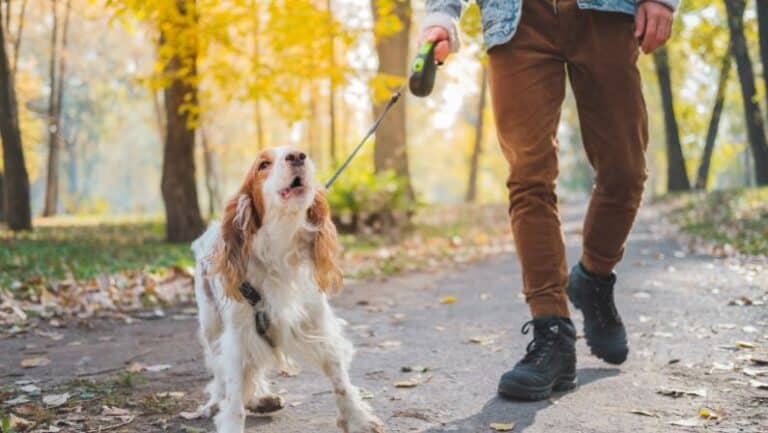
What Causes Leash Reactivity?
As a dog owner, you may be asking yourself “why is my dog reactive on leash?” The truth is that dogs can pull on their leash for several reasons, ranging from excitement to fear.
As a general rule, dogs mainly pull on their leash to get where they want to faster—usually either towards or away from their triggers.
This makes pulling rewarding to the dog. And the more they do it, the harder it is to get them to stop, which is why it’s best to teach your dog loose-leash walking as early as possible.
Poor socialization
The outdoors can be incredibly overstimulating to a dog who’s used to seeing the same people and the same environment. For some dogs, there are plenty of great smells, open spaces, and friends they haven’t met yet outside, and they want to be able to explore it all.
But for other dogs, there are also strange, unfamiliar places with noises, people, and animals that can scare them.
Dogs who don’t get to socialize early on often don’t know how to react to these new situations, making them more likely to have strong reactions.
Having a Bad Experience During a Walk
Being Punished for Reacting
People commonly correct their dogs for perceived displays of aggression, which isn’t always healthy. Dogs growl and bark as a warning that they’re stressed or uncomfortable. If your dog is afraid to bark or growl out of fear of punishment, it may take action without warning—such as going straight for the bite.
Punishment such as yelling, pulling back, or grabbing your dog also increases their anxiety level. If your dog’s already aroused or stressed, focus on calming them down.
Correcting them when they’re close to their limit may have them take that aggression out on the handler and creates more bad experiences for the dog to associate with the leash.
The dog is over-excited, overstimulated
Frustration
At the root of it, knowing how dogs behave can help you learn how to calm a leash reactive dog.
Dogs may be social but they have their own rules for socializing with other dogs; they like having the freedom to circle around each other, sniff them, invite them to play—or having the ability to get out of each other’s space if they don’t like each other. When walking your dog outside, a leash limits their control over their actions and forces them to meet other dogs face-first.

How can we help our dogs cope with leash reactivity?
Acknowledge the problem
The first step to learning how to train leash reactive dogs is to know what specifically triggers your dog. By doing so, you can both limit your dog’s exposure to them or slowly desensitize them to their triggers in a safe, controlled environment. Plus, it’s really helpful to know how to best de-escalate and disengage from a situation.
Don't pull back
Your dog needs to learn how to stand next to you calmly and without pulling away. When your dog pulls away, don’t pull them back in. Instead, reward them every time their attention is on you.
Wait until they’re calm or looking at you and reward them with treats and praise. If they pull away, stand still and wait until they return to you. You can call out their name if they’re distracted. When they return to you, praise them and reward them with treats.
The key here is to teach your dog that it’s more rewarding for them to stay close to you. You can build this behavior over time using treats, toys, praise, exercise, or whatever motivates your dog the most. With practice and consistency, your dog can learn to go on relaxed walks with you outdoors.
Bring treats and work on commands during walks
Treats are a powerful motivator for dogs to learn commands and knowing how to use treats effectively can make all the difference in learning how to train a leash reactive dog.
When you’re training your dog to be less reactive when wearing a leash, you want to use high-value rewards like tiny bits of chicken—something that’s sure to get their attention more than their trigger.
Make sure to make it a special reward for your dog and to only use it when working on their reactivity. The more you can make it obvious to your dog that they can only get this reward when they’re working on reactivity, the better.
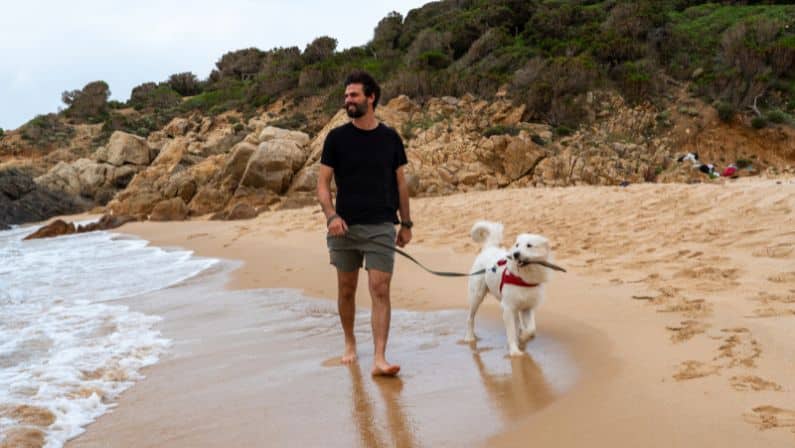
How to calm a leash reactive dog
Understanding your dog’s behavior plays a huge role in how to train a reactive dog on leash. By familiarizing yourself with what your dog’s comfortable with, you can anticipate their needs and make adjustments to help manage their reactions while wearing a leash.
This comes in useful for slowly teaching your dog to leave or disengage from a situation. Starting in a safe and controlled environment, you can slowly introduce your dog to new, unfamiliar situations and how to properly respond to them.
Want to have the dog of your dreams? Call us today at K9 Mania Dog Training!
Above all, to make lasting, holistic change, it’s important for you to actively work on training your dog. At K9 Mania Dog Training, we help dog owners like you transform their lives by helping you build a relationship with your dog based on trust and consistency.
Training leash reactive dogs is a process and our expert dog trainers can help ease you through it and set you up for success. Call us today at (516) 217-1604 for a free consultation and we’ll help you understand your dog’s behavior and help create a learning plan to help you build the perfect relationship with your dog!

